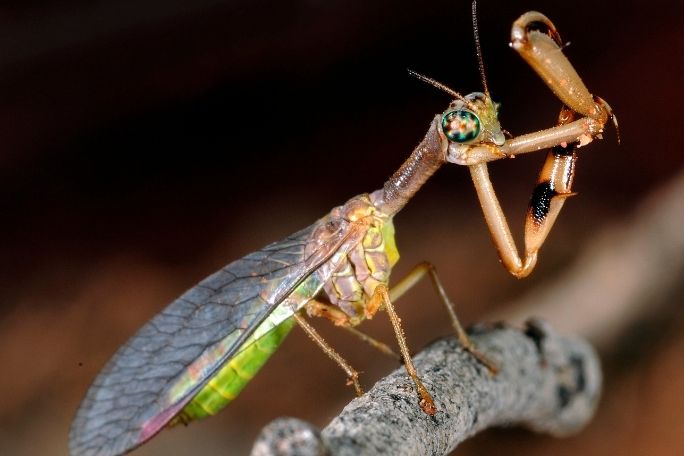Lesson summary
Students will explore habitats in their local backyards, focusing on their school grounds. They will begin by looking at the word ‘habitat’ and how this relates to the concept of home. Students then create a birds-eye perspective of potential habitats on their school grounds, before taking the time to explore these through sensory experiences. Students will then reflect on this experience by developing a series of questions that can be used to guide further investigation of habitats.
Learning intentions:
Students will...
- understand the similarities between a home and a habitat
- understand why having a birds-eye view can be a valuable perspective to have
- recognise how utilising our senses can give us a different perspective.
Success criteria:
Students can...
- describe what a habitat is
- create a birds-eye habitat map, using a key and a title
- use the satellite view on Google Maps and explain why it is useful
- demonstrate the use of our senses in nature as a tool for mindfulness
- create questions to guide inquiry.
Lesson guides and printables
Curriculum links
Select your curriculum from the options below.
Lesson details
Curriculum mapping
Australian Curriculum content descriptions:
Year 5 English:
- Use appropriate interaction skills including paraphrasing and questioning to clarify meaning, make connections to own experience, and present and justify an opinion or idea (AC9E5LY02)
- plan, create, edit and publish written and multimodal texts whose purposes may be imaginative, informative and persuasive, developing ideas using visual features, text structure appropriate to the topic and purpose, text connectives, expanded noun groups, specialist and technical vocabulary, and punctuation including dialogue punctuation (AC9E5LY06)
Year 5 Science:
- Examine how particular structural features and behaviours of living things enable their survival in specific habitats (AC9S5U01)
- Pose investigable questions to identify patterns and test relationships and make reasoned predictions (AC9S5I01)
Year 5 HASS:
- Locate, collect and organise information and data from primary and secondary sources in a range of formats (AC9HS5S02)
- Evaluate information and data in a range of formats to identify and describe patterns and trends, or to infer relationships (AC9HS5S03)
Year 6 English:
- Plan, create, edit and publish written and multimodal texts whose purposes may be imaginative, informative and persuasive, using paragraphs, a variety of complex sentences, expanded verb groups, tense, topic-specific and vivid vocabulary, punctuation, spelling and visual features (AC9E6LY06)
Year 6 Science:
- Investigate the physical conditions of a habitat and analyse how the growth and survival of living things is affected by changing physical conditions (AC9S6U01)
- Pose investigable questions to identify patterns and test relationships and make reasoned predictions (AC9S6I01)
Year 6 HASS:
- Locate, collect and organise information and data from primary and secondary sources in a range of formats (AC9HS6S02)
- Evaluate information and data in a range of formats to identify and describe patterns and trends, or to infer relationships (AC9HS6S03)
Year 5 & 6 Health and Physical Education:
- Analyse how behaviours influence the health, safety, relationships and wellbeing of individuals and communities (AC9HP6P10)
- Participate in physical activities that enhance health and wellbeing in natural and outdoor settings, and analyse the steps and resources needed to promote participation (AC9HP6M05)
Syllabus outcomes: EN3-4A, EN3-8D, EN3-1A, EN3-2A, ST3-10LW, ST3-4WS, ST3-11LW, GE3-4, PHS3.12, SLS3.13, ALS3.6
General capabilities: Literacy, Personal and Social Capability
Cross-curriculum priority: Sustainability
Relevant parts of Year 5 English achievement standards: Students spell using phonic, morphemic and grammatical knowledge. Students create written and/or multimodal texts, including literary texts, for particular purposes and audiences, developing and expanding on ideas with supporting details from topics or texts
Relevant parts of Year 6 English achievement standards: Students create written and/or multimodal texts, including literary texts, for particular purposes and audiences, developing, explaining and elaborating on relevant ideas from topics or texts.
Relevant parts of Year 5 Science achievement standards: Students explain how the form and behaviour of living things enables survival. Students plan safe investigations to identify patterns and relationships and make reasoned predictions.
Relevant parts of Year 6 Science achievement standards: Students explain how changes in physical conditions affect living things. Students plan safe, repeatable investigations to identify patterns and test relationships and make reasoned predictions.
Relevant parts of Year 5 HASS achievement standards: Students develop questions and locate, collect and organise information and data from primary and secondary sources. Students evaluate sources to determine origin and perspectives.
Relevant parts of Year 6 HASS achievement standards: Students develop questions, and locate, collect and organise information and data from a range of primary and secondary sources. Students evaluate sources to determine origin, purpose and perspectives.
Relevant parts of Year 5 & 6 HPE achievement standards: Students explain how different factors influence identities. They recognise the influence of emotions on behaviours and discuss factors that influence how people interact.
This lesson is part of the wider unit of work Backyard Bush Blitz – Years 5 & 6
Resources required
- Device capable of presenting a website to the class
- Drawing materials (pencils and paper)
- Generating Questions Factsheet – OPTIONAL
- Assessing Outdoor Hazards And Risks – OPTIONAL
- Student Worksheet – one copy per student
Skills
This lesson is designed to build students’ competencies in the following skills:
- Communication
- Creativity
- Critical thinking
- Cultural understanding
Additional info
Time required: 150 mins
Level of teacher scaffolding: Medium – facilitate class discussion
This is an original Cool+ lesson.


Welcome back!
Don't have an account yet?
Log in with:
Create your free Cool.org account.
Many of our resources are free, with an option to upgrade to Cool+ for premium content.
Already have an account?
Sign up with:
By signing up you accept Cool.org's Terms and Conditions(Opens in new tab) and Privacy Policy(Opens in new tab).